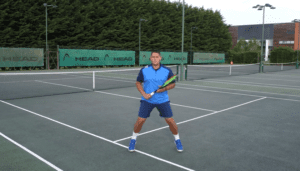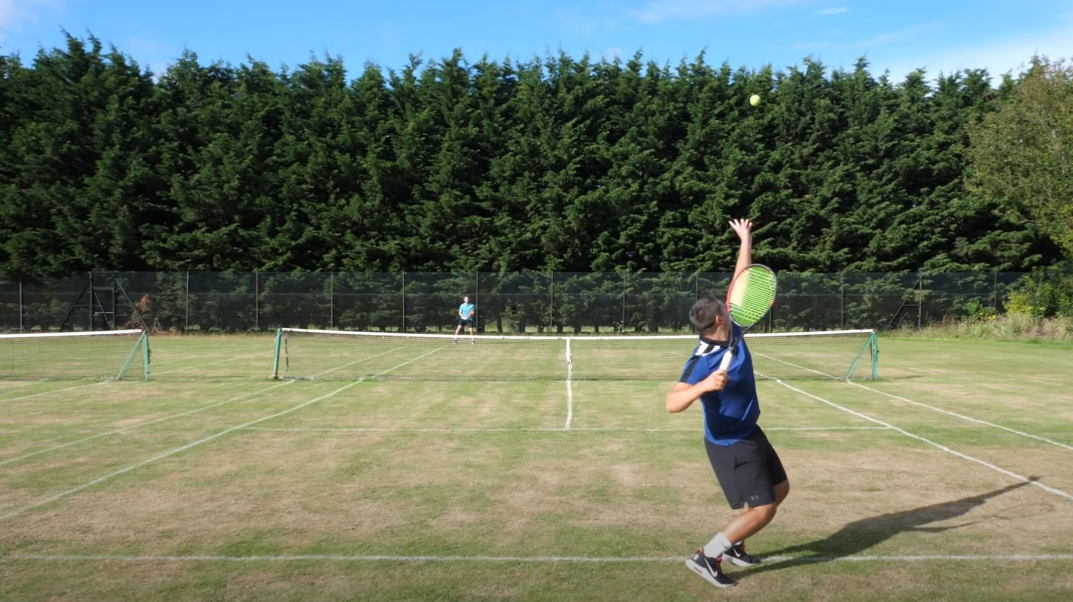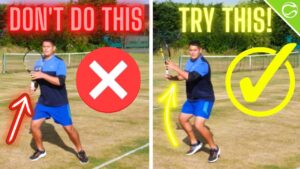
Serve and Volley Tennis Lesson – The Complete Guide

Serve and Volley Tennis Lesson – The Complete Guide
Serve and volley is a bit of a dying art in tennis these days. Some players like Roger Federer and Feliciano Lopez still use this tennis tactic occasionally but the vast majority of pro players only use it in doubles matches and not in singles. Why?
The main reason is that tennis has slowed down since the 1990s. During the era of Sampras, Ivanisevic, Krajicek and many other big servers, many tennis fans and spectators claimed the boom boom game of ace or serve and one volley was boring. So in the late 90s, the powers that be started transforming the game as we knew it. They experimented with bigger balls, they slowed down court surfaces, they even changed the grass they used at Wimbledon and many of the players noticed that the faster grass courts of decades past were now replaced with a slower, higher bounce, that was exaggerated even more in warmer weather, with some players saying it played more like a hard or even clay court, and not a classic grass-court that rewarded players to attack the net.
The slower courts gave counter punchers like Hewitt and Nadal a real chance at winning Wimbledon and defeating the big servers.
Having said all that, this doesn’t mean the strategy is totally useless these days, we see Roger Federer using it more often in his matches, keeping the points much shorter and saving energy over the course of an event.
Does Serve and Volley work at a recreational level?
The difference in court speed and equipment has had some effect at club level, but serve and volley is still one of the most effective ways to win points at that level.
How To Serve and Volley in Five Simple Steps:
Step One
The foundation of executing the serve and volley strategy well is your serve. Knowing where to serve is half the battle. By serving down the T on both the deuce and advantage sides, you’ll limit the amount of angle the returner has to pass you with. It’s also important to know that when you hit a bigger, flatter serve and come in, you’ll have less time to move into the net, so the slice and kick serves can also be a very effective way of reaching a good position when transitioning into the net.
Step Two
Transition steps. When you land after your serve, you’ll be inside the baseline hopefully, you’ll then have time for two or three steps before you need to split step when the opponent makes contact on their return. Those 2-3 steps have to be explosive, big and moving you in the direction of the serve you’ve hit. If you serve out wide, you move across the court to cover the down the line pass.
Step Three
The split step. A common error many players make on the serve and volley is they rush the net and forget to split. Or they split step and stop completely. Your split step should act as a tiny pause in the forward motion, but as soon as you recognize where the return is going, you should then carry on with the momentum you’ve created and close https://www.bernardspharmacy.com down the net for that first volley. Try to time your split step so that you land just after the opponent has made contact with their return.
Step Four
Your first volley. If the return is floating and easy to attack, you should move up the court and be aggressive with your first volley, using shorter angles to hit winners. If the return is mid-height or low, treat it as an approach shot, in general, you’ll either hit the first volley down the line or into the opponent’s weaker side (the backhand for 90% of players).
Step Five
Finishing the point. After your first volley, continue moving up inside the service boxes. The closer you get to the net, the more angle will open up to you. Avoid getting too close to the net, as the lob will then become an easy option for your opponent. Around 6-8 feet away from the net is a good base to have, but move in after you see the ball coming towards you.
Video Timeline:
00:00 – Intro To Serve and Volley
00:52 – The Serve (step one)
1:37 – Serving On The Deuce Side
3:42 – Serving On The Ad Side
5:17 – Moving Forward After The Serve (step two)
8:16 – The Split Step (step three)
12:38 – The First Volley (step four)
14:26 – Finishing The Point (step five)
18:26 – Serve and Volley Examples with Analysis
24:39 – Outro



